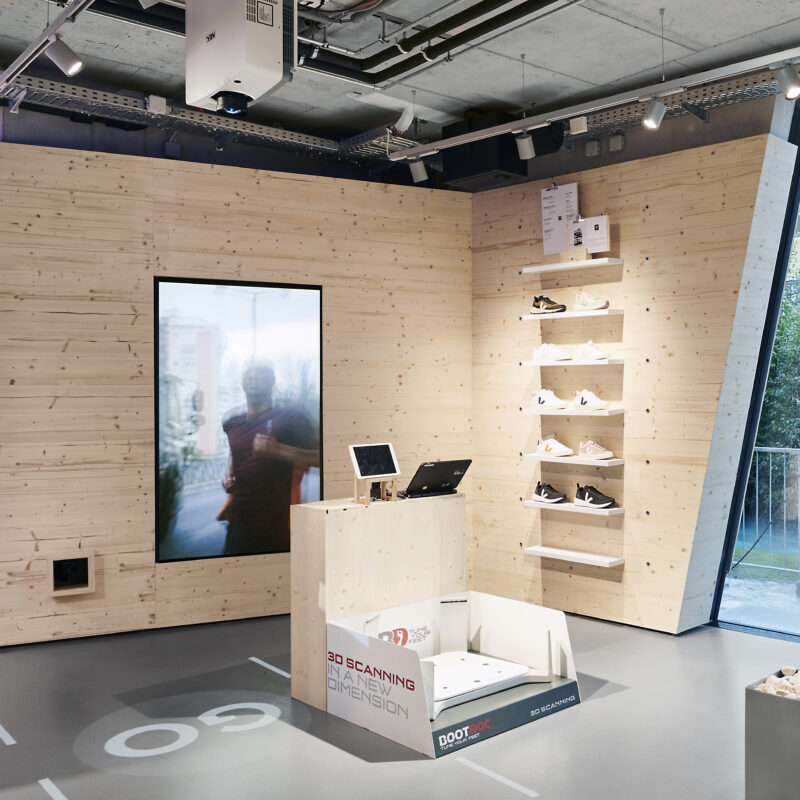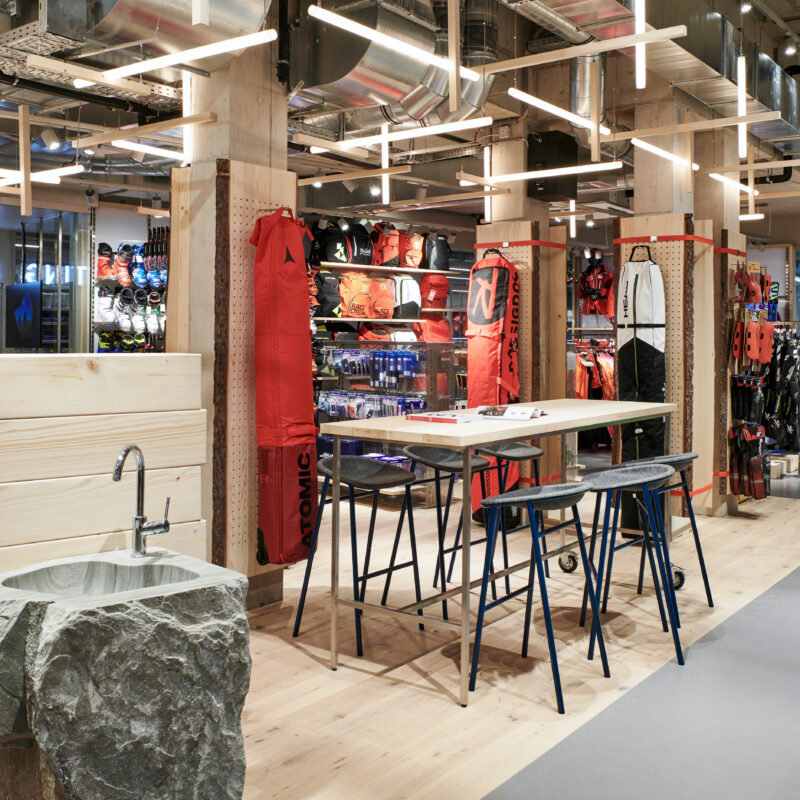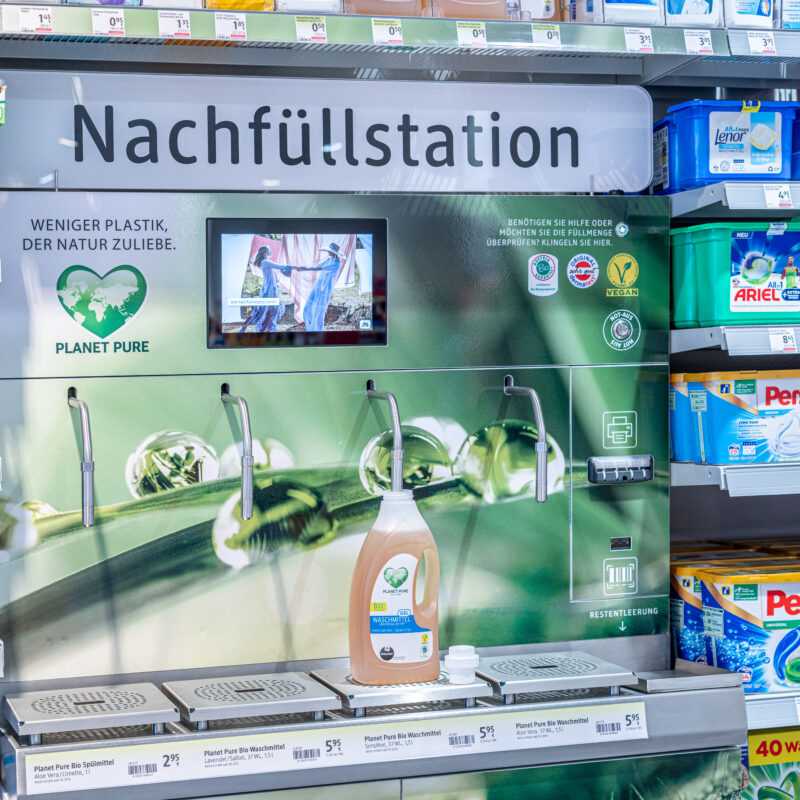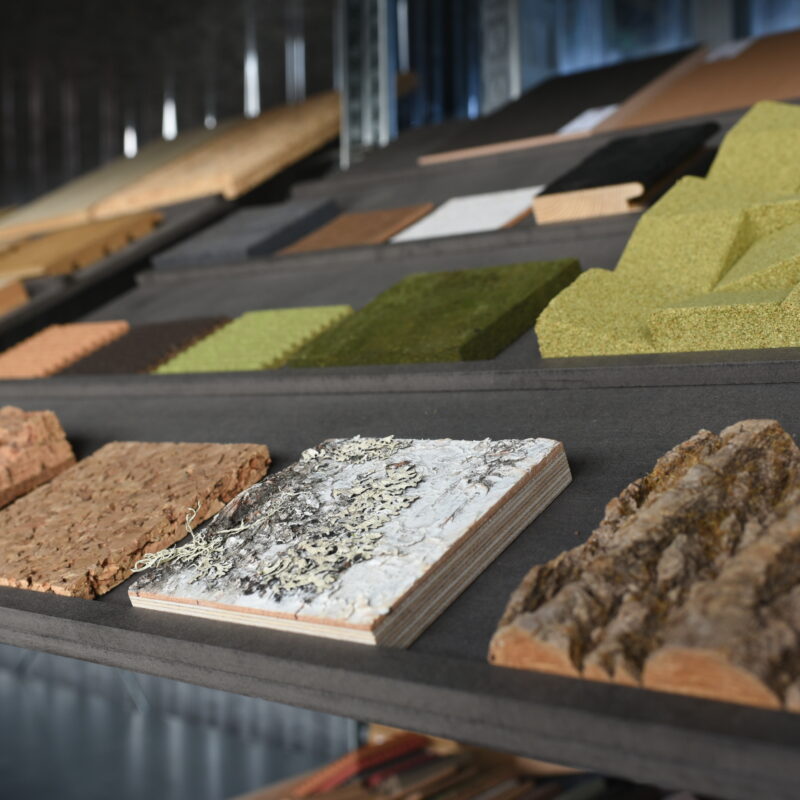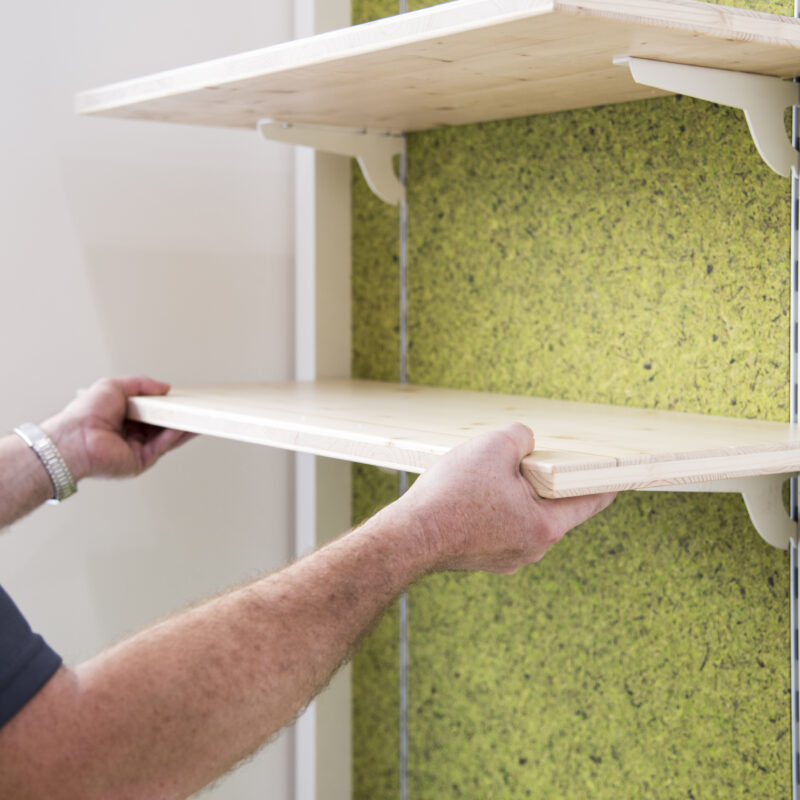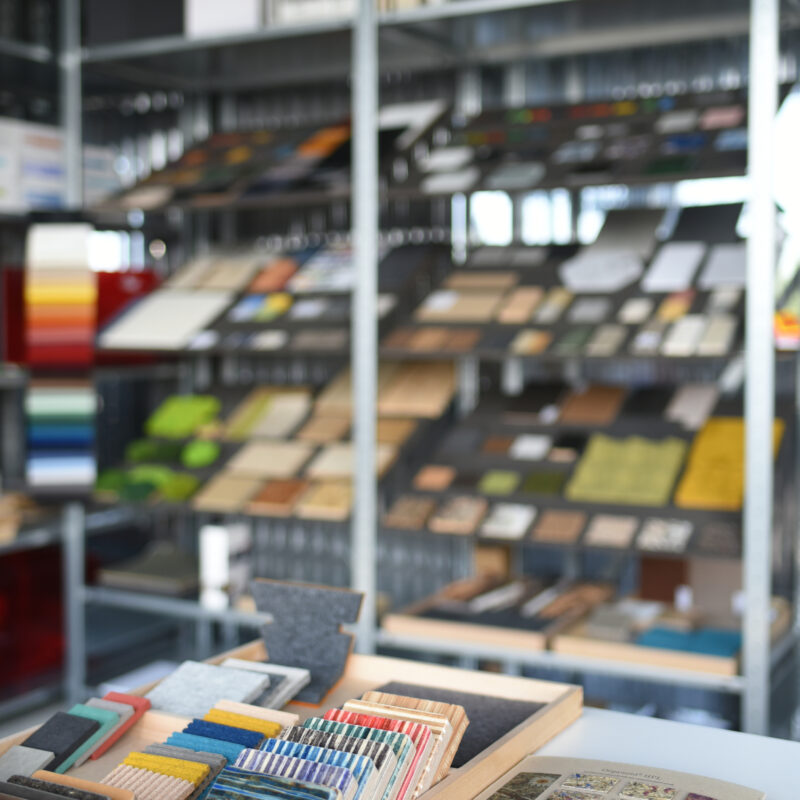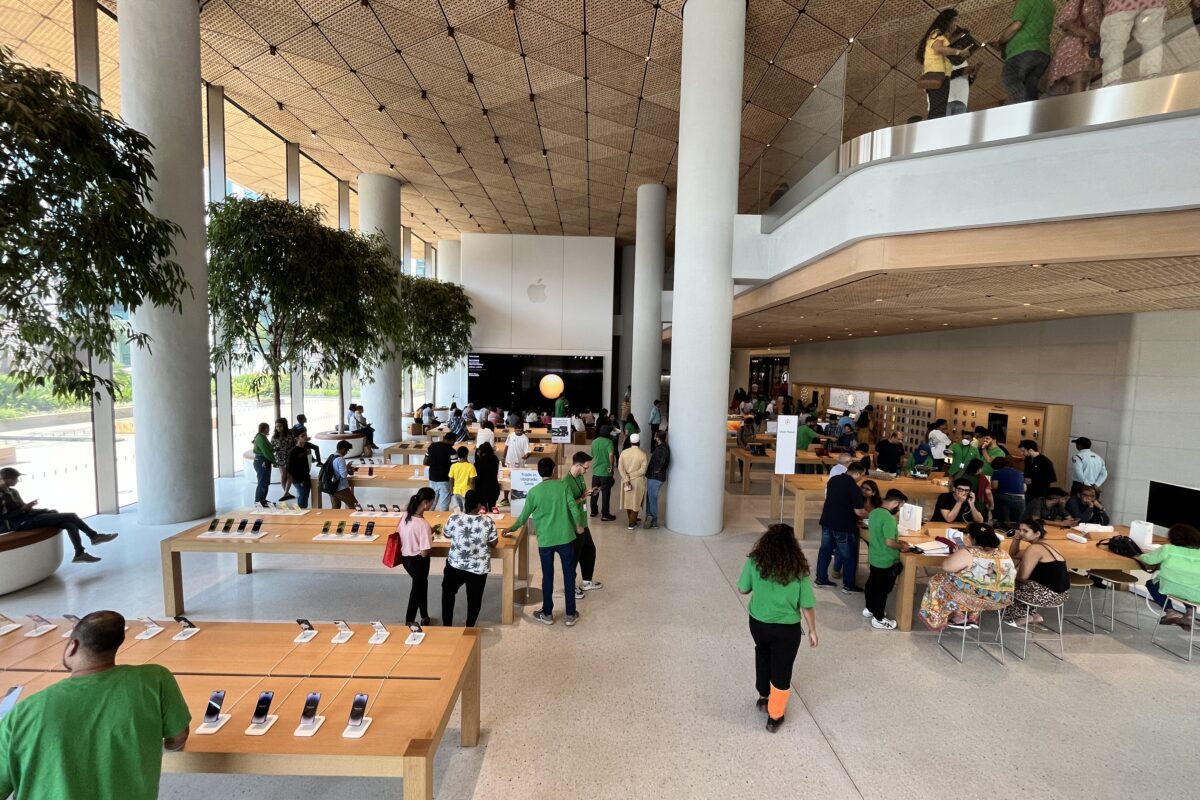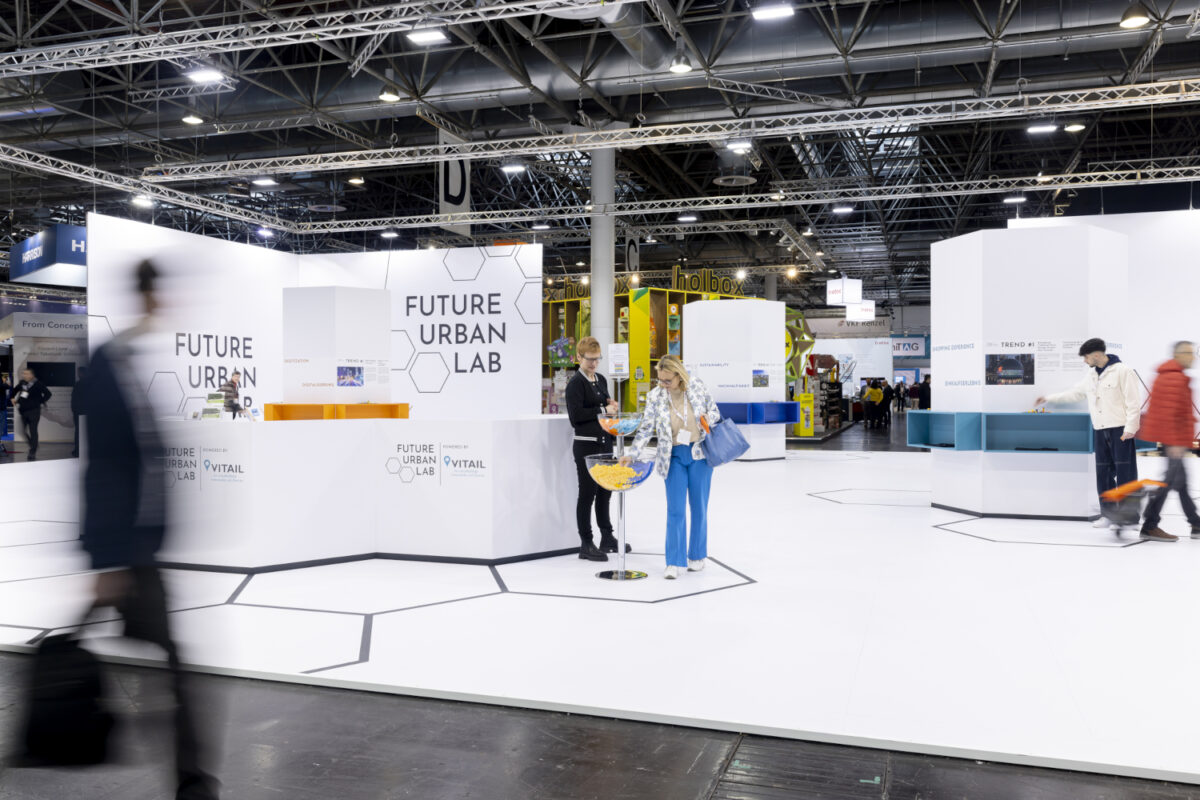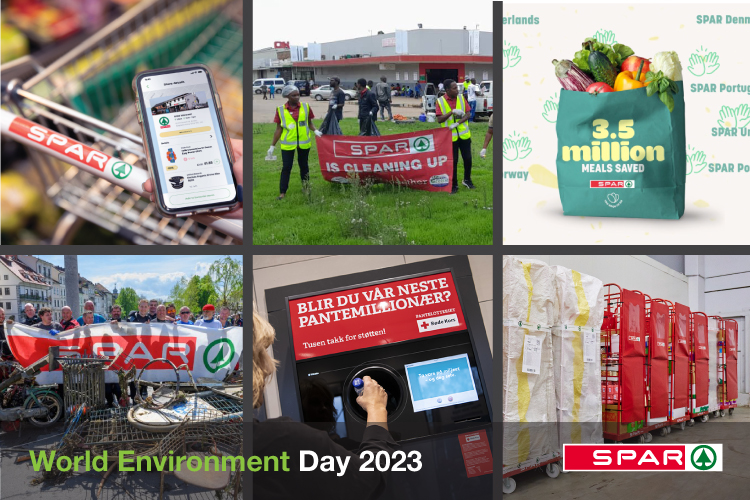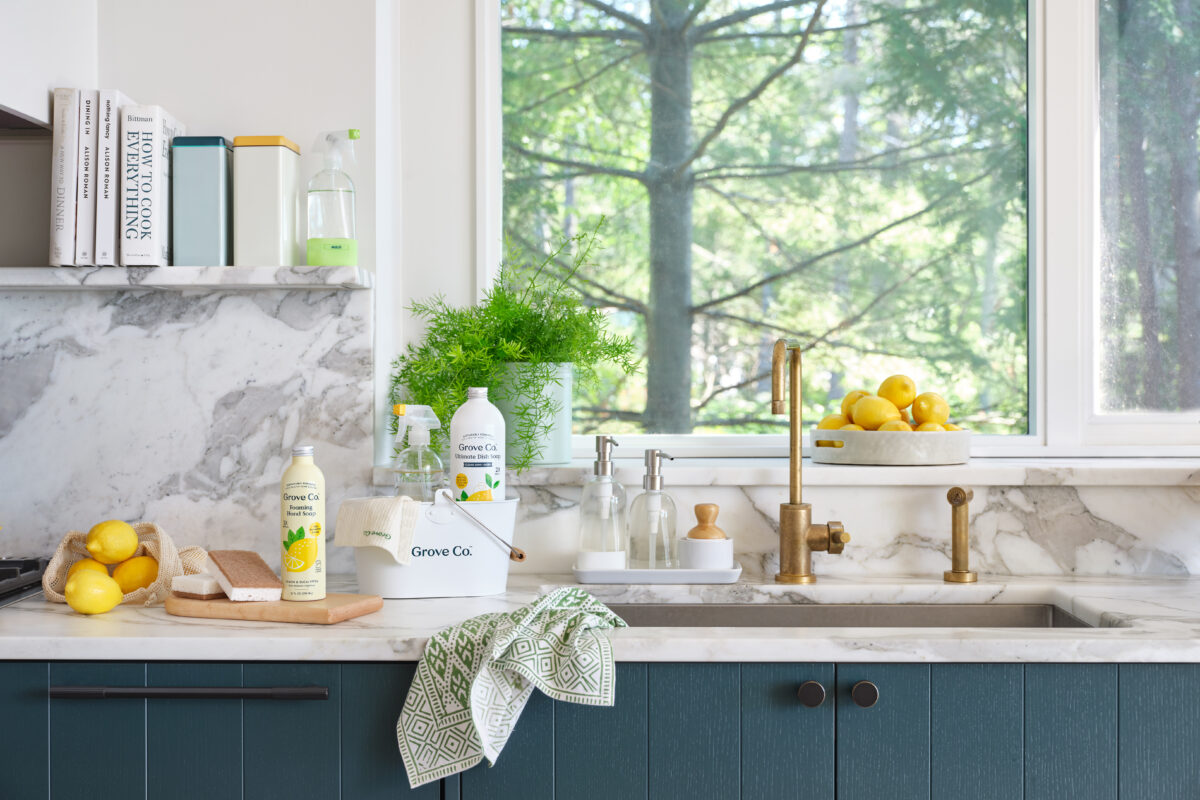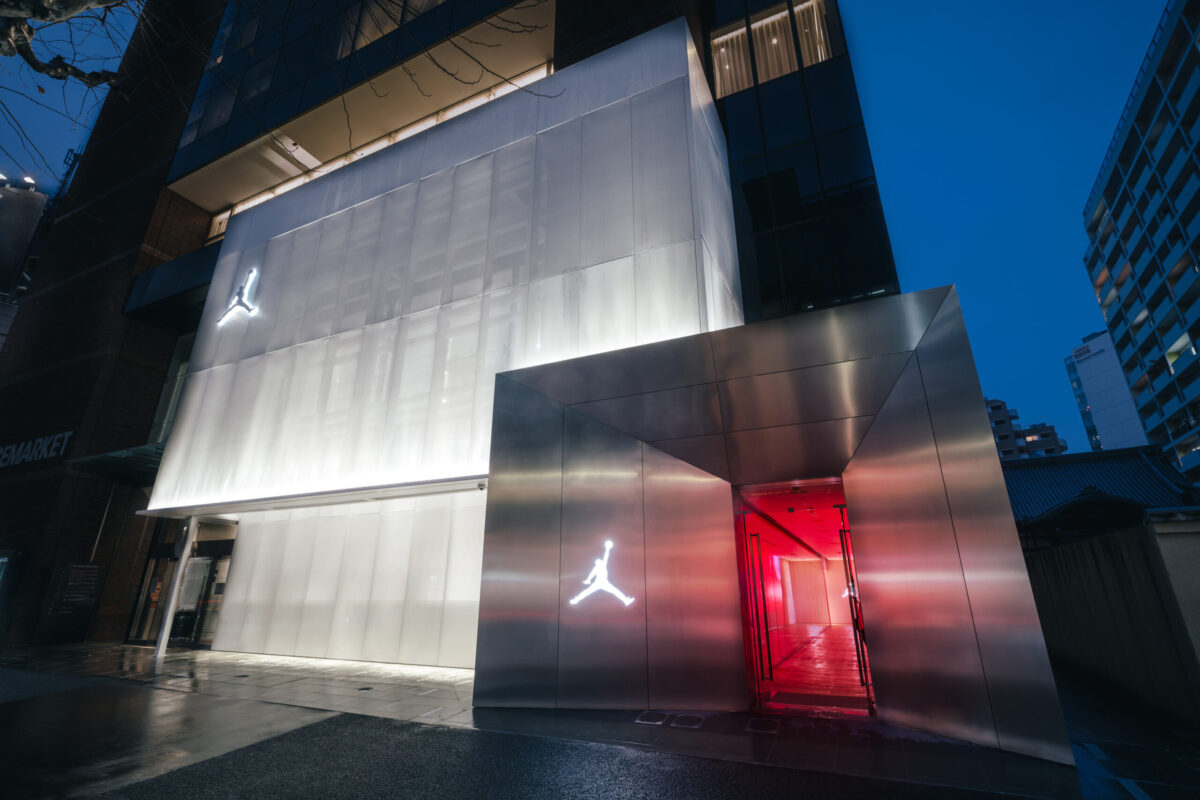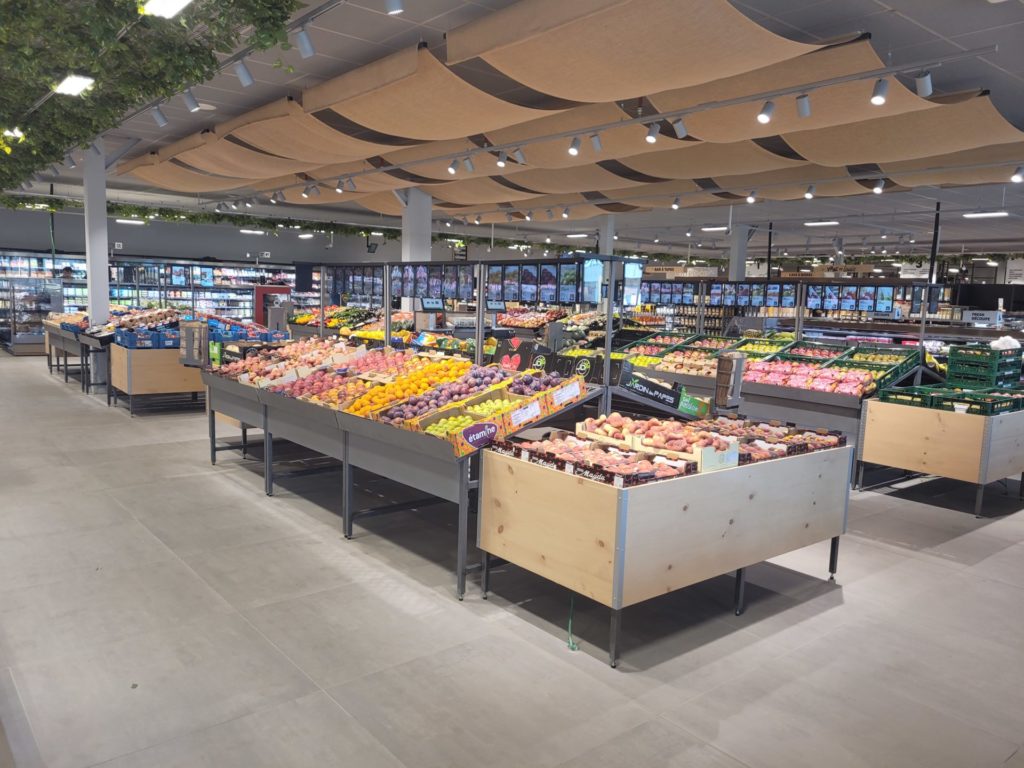Sustainable materials are gaining ground in store design
By Katja Laska (a EuroShop.mag exclusive)
Sustainability – an issue and trend that will continue to change and take over many business agendas. Environmentally friendly actions and shopfitting systems have long been a critical requirement in retail environments according to Swantje Donath, Shop Consultant at umdasch The Store Makers. But what does that mean… exactly?

Swantje Donath ©PicturePeople
Ms. Donath, what are “sustainable materials”?
Numerous dimensions are combined under the “sustainable materials” header.
This always involves a conscious approach to the environment, nature and people.
Starting with resource-saving raw materials, which can be renewable or recycled, for example, through an energy-saving and environmentally friendly manufacturing process to the longest possible use of the material, there is a lot to consider. Another important aspect is how “healthy” the material is in the sense of being emission-free.
And what happens to the materials after their useful life is also part of the equation in terms of the life cycle model. Recycling and upcycling are the keywords here.
In summary, the ecological footprint of a sustainable material and its use should be kept as small as possible.
What are the top emerging trends?
“Pure nature” (German: “Natur pur”) continues to be a major trend: materials such as local types of woods (spruce and pine) that are left in their natural texture produce a distinct scent and create a pleasant and warm charm and ambiance. Cork and felt also continue to be exciting design elements thanks to their amazing versatility – they can be colorful and stylish, yet also simple and natural in character.
Regional materials are likewise popular and lend themselves to storytelling and engaging experiences. Some great examples include terrazzo (a composite material of marble chippings set into cement) with additives from the respective region, wall murals with traditional wood shingles, and sheep wool for acoustic applications.
When it comes to materiality and design, we notice a continuous exploration and development of novel materials. This includes seagrass wall panels, marble-look tiles made from fish scales, leather alternatives produced from wood veneer or fungus mycelium (the root structure of mushrooms), tiles made from algae or acoustic materials made of recycled paper or pulp – there are no limits in the universe of imagination. The novel, often natural textural appearance of the material fuses a design featuring clear lines, thus creating a feel-good ambiance that focuses on the essentials.
Upcycling is still one of the biggest trends. The approach opens possibilities for new, exciting surfaces that add a unique aesthetic look.
Customization is yet another innovative trend: the production process uses pre-consumer recycled content, meaning materials that have been diverted from the customer’s waste stream, for example. This creates a unique, custom look. Examples include wood panels made of leftover denim as surface materials, panels made from highly compressed used textiles featuring a top layer from the customer’s production waste.
This type of material application likely comes with special requirements.
Yes, as there are certain points to take into consideration. In some cases, high flammability and increased fire protection (B3-A1), zero-emissions standards or special resilience criteria may need to be factored into the equation. You must also ensure the optimal use of materials: If a material is applied incorrectly, it may not last long and subsequently requires the additional use of other resources. Appearance and functionality can also be adversely affected. Costs and lead times might also differ from those of conventional products and must be integrated into the timetable and cost schedule.
Can you give us some expert advice on how retailers can pursue a sustainable shopfitting approach?
A first step may be to refurbish your existing retail space. Instead of disposing of your entire inventory as part of your remodel project, you can refinish and reuse existing shop fittings – an option that is both sustainable and budget-friendly. That’s why we created the “refresh your shelf” refurbishment concept, which benefits retail chains as a sustainable solution: outdated equipment, fixtures, and fittings are removed, cleaned, possibly recoated, and reconstructed in this setting. This breathes new life into a retailer’s inventory and is more cost-effective than an investment in new product display units.
A reassessment and redesign of specific areas can be another great way to tackle sustainable shopfitting: installing sustainable and carbon neutral floors, improving room acoustics thanks to sustainable acoustic elements, complementing shopfitting with sustainable shopfitting elements in the midsection or through reworked wall panels – there are many options to reimagine retail spaces.
Sustainable shopfitting can pay off in big ways: The initial investment in high-quality and flexible shopfitting systems may be greater but will save you money in the long run. Low-cost alternatives often come with negatives such as high minimum order quantities, long delivery times, uncertain delivery performances, potential quality issues, poor customer service, a lack of standards and absences of guarantees.
If applicable, we also assist our clients in obtaining the requisite sustainability certifications – involving partners where appropriate. Our goal is to help retailers reduce their carbon footprint.




